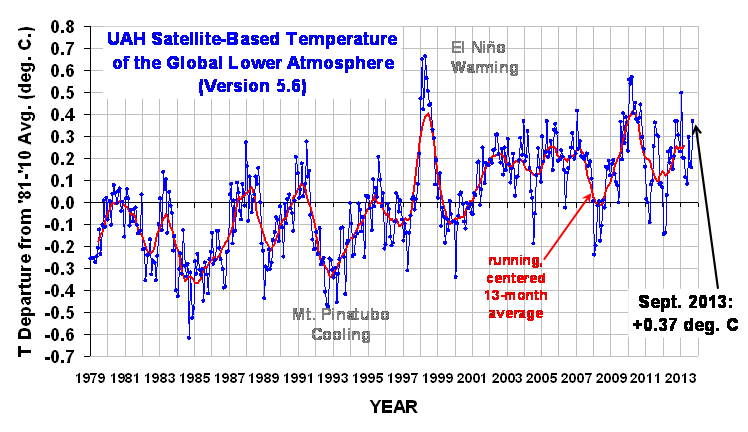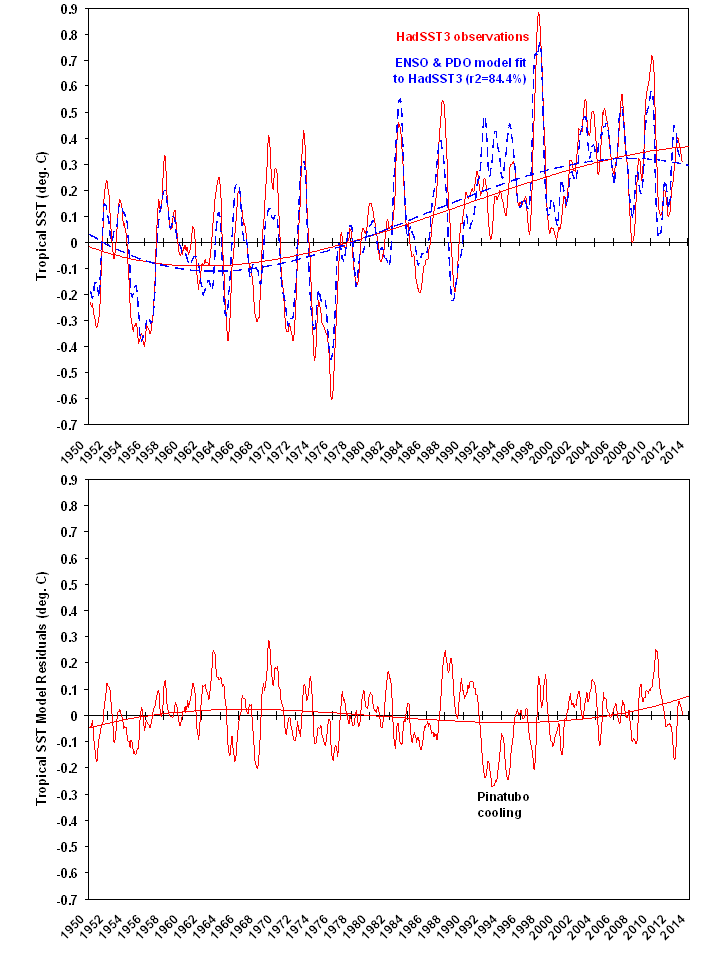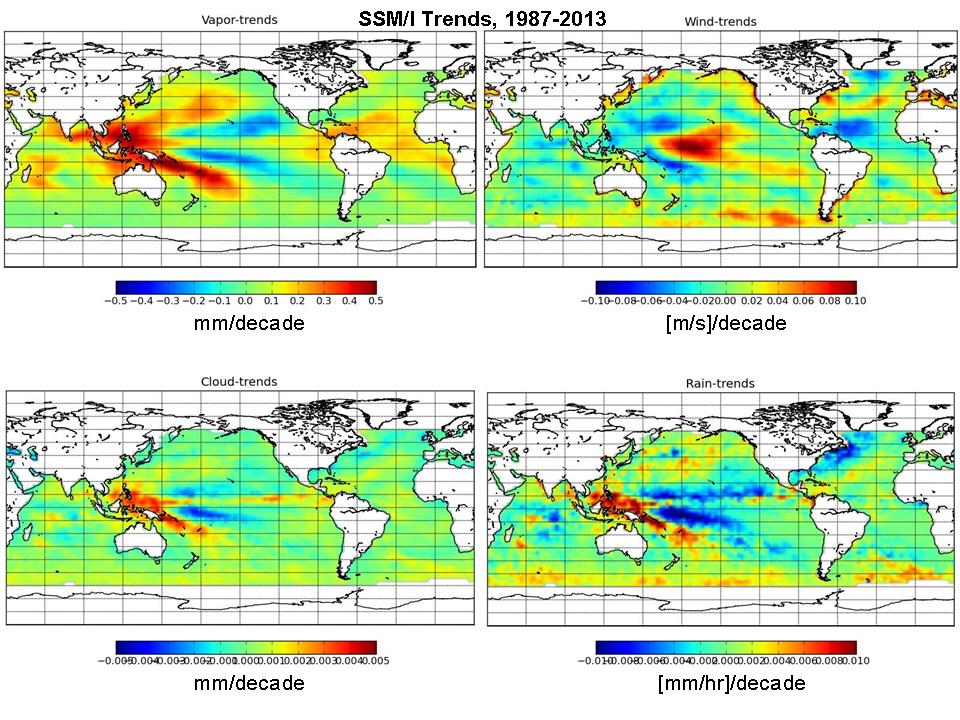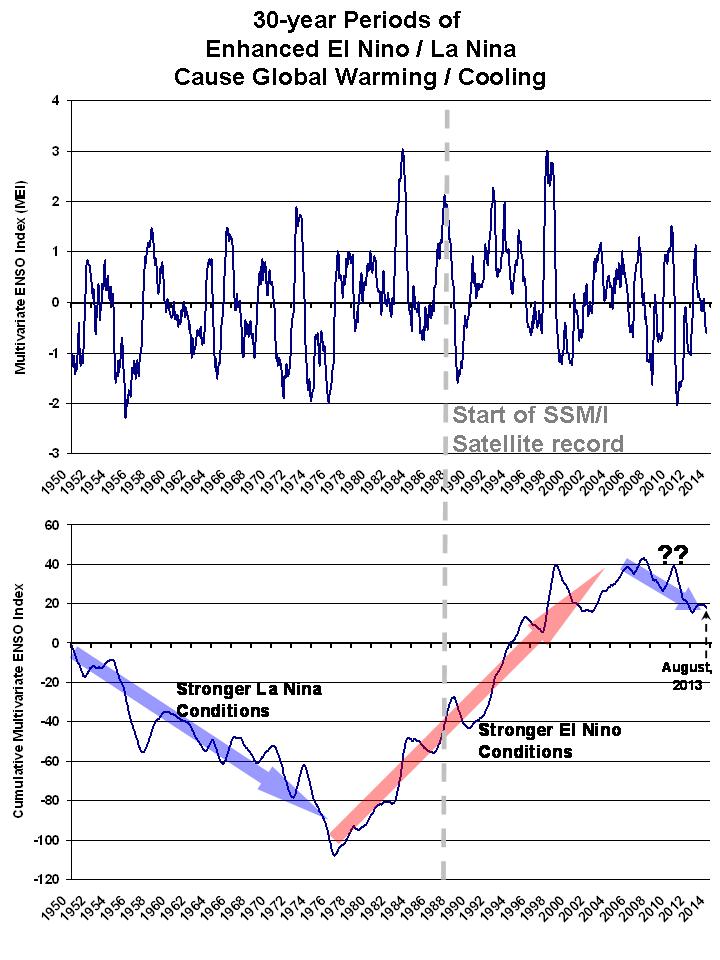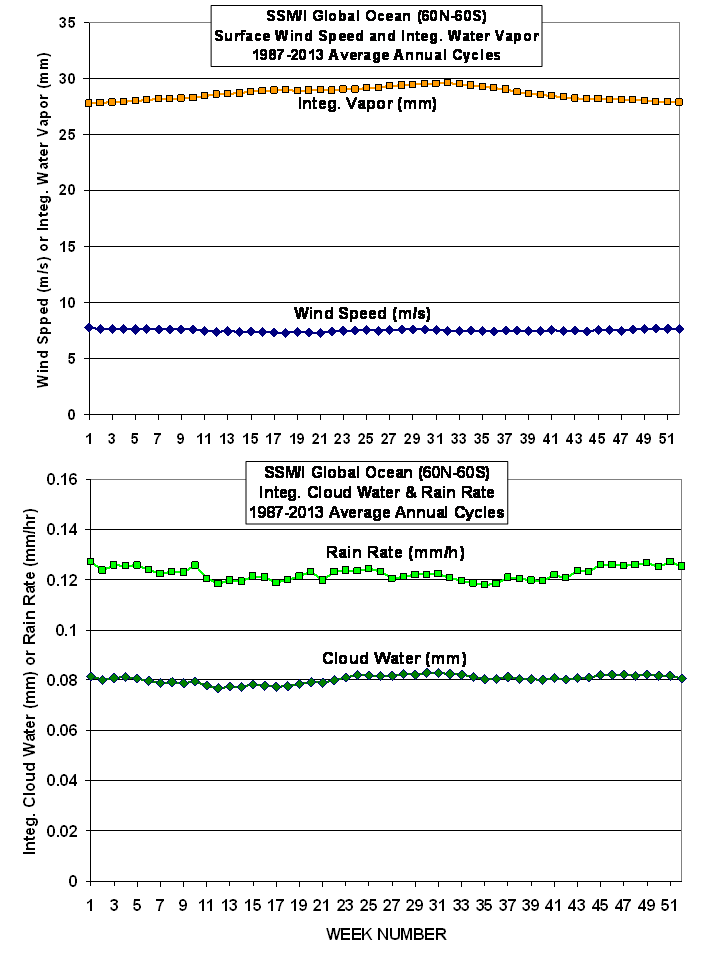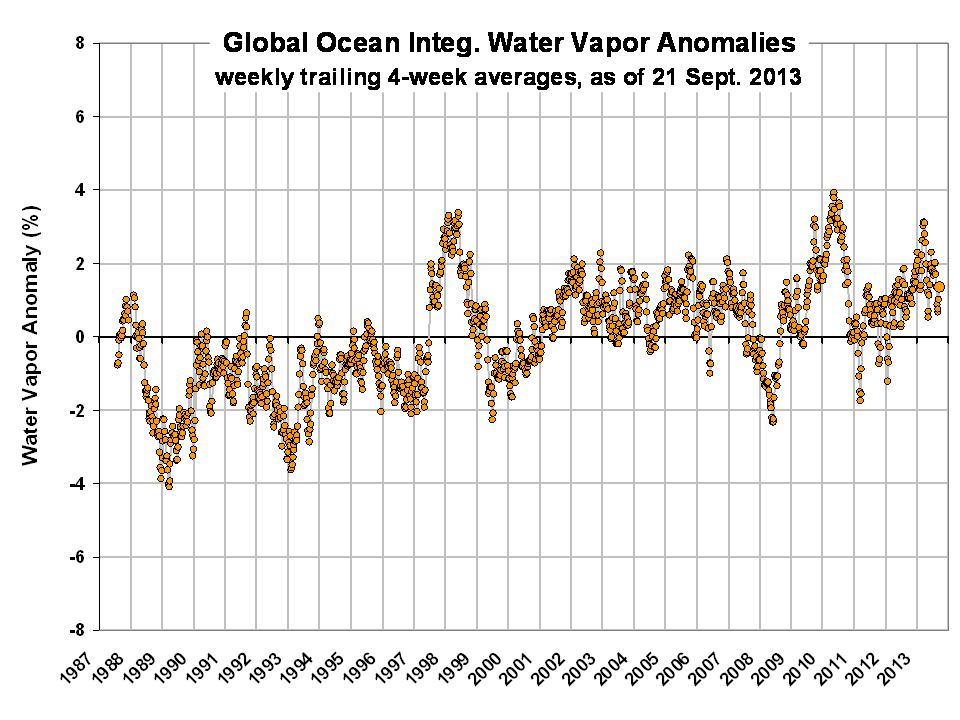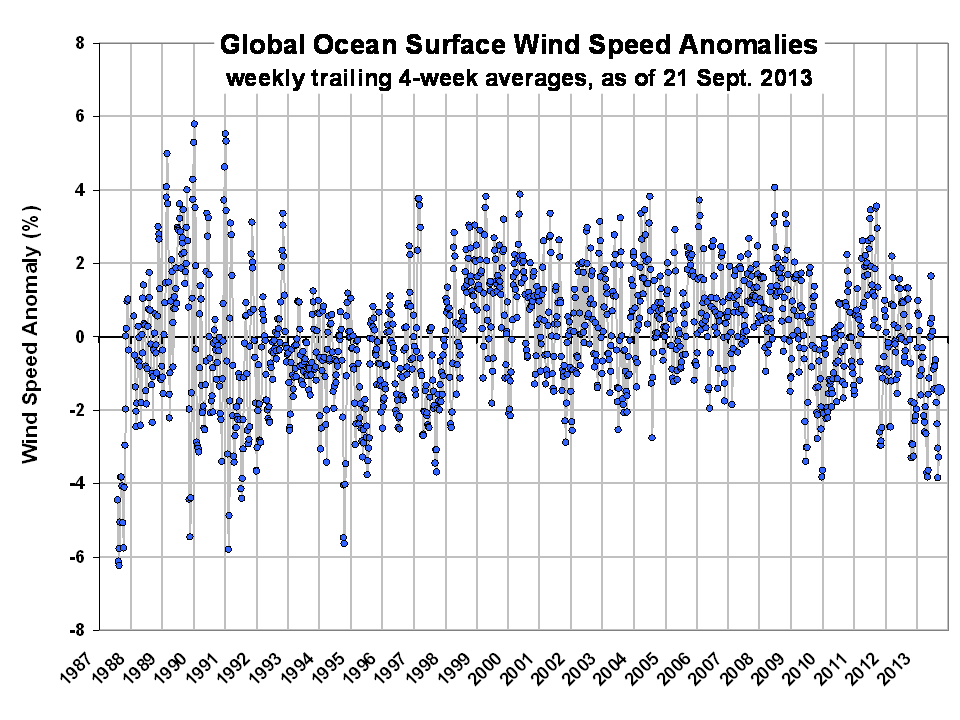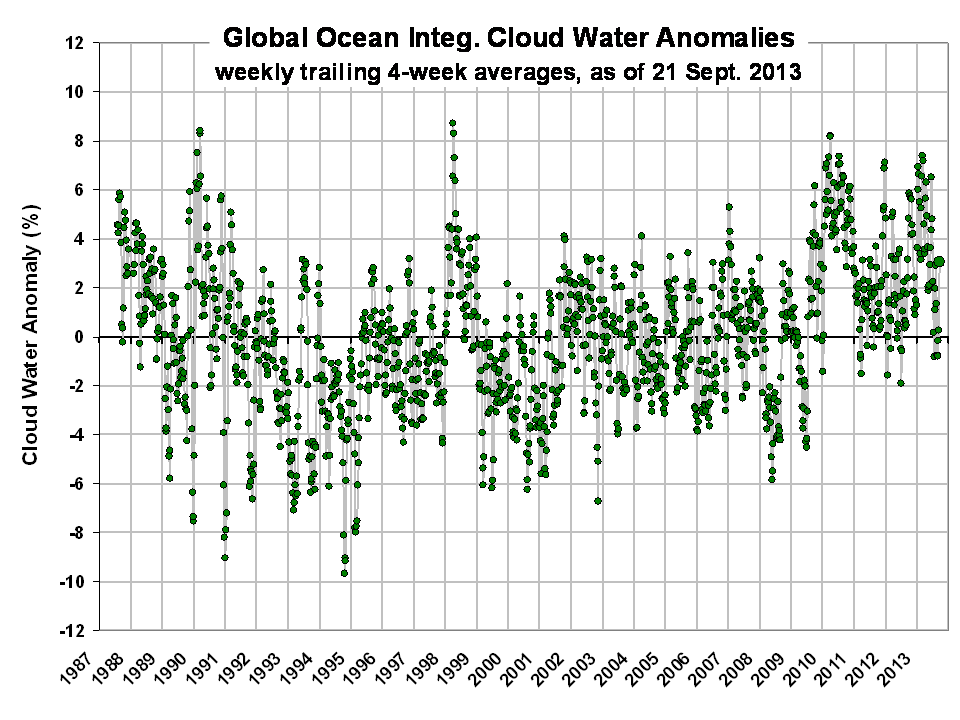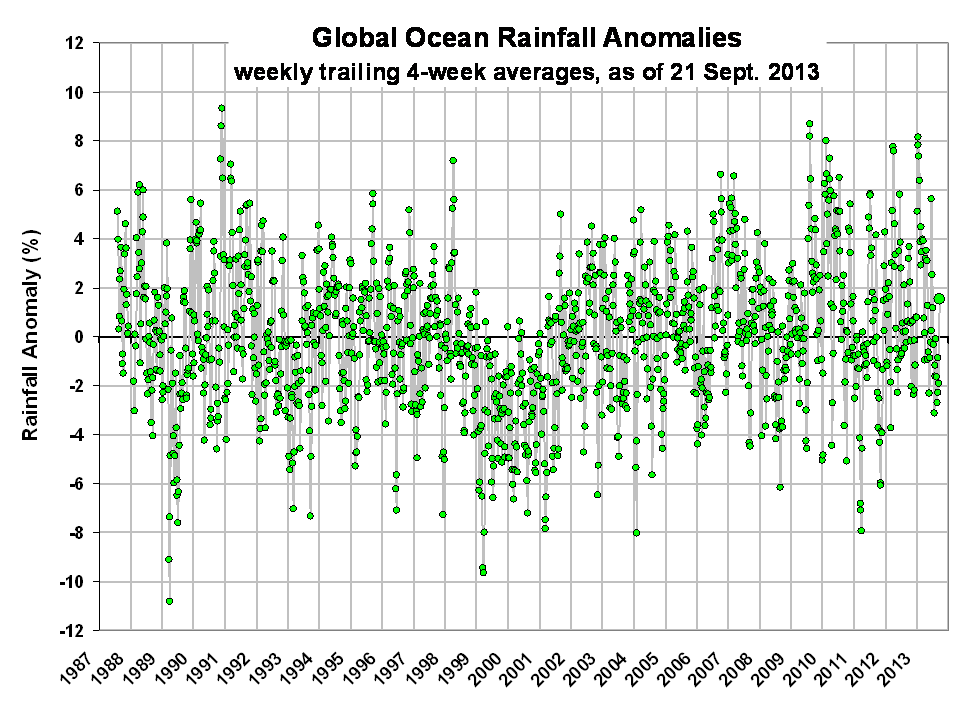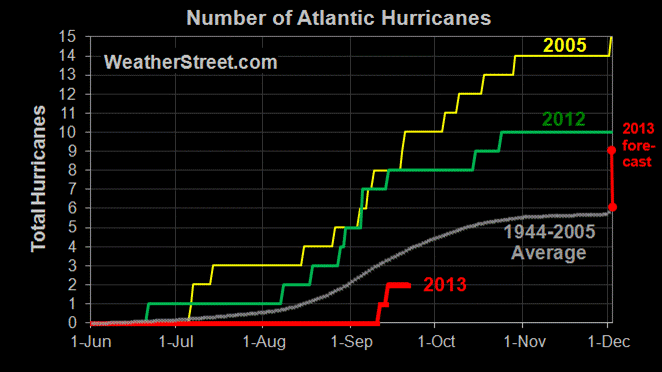I consider what follows to be potentially very significant…but also very preliminary.
Background
Global warming (including the increase in ocean heat content) is supposedly explained by human greenhouse gas emissions (CO2) reducing the ability of the Earth to cool through infrared radiation to outer space, leading to the observed warming in the last 50 years or so.
My (admittedly minority) view is that some portion of this heating/warming is due to Mother Nature, probably from natural cycles in low cloud cover changing the amount of sunlight absorbed by the Earth. (Why? Well, take your pick…ENSO, PDO, NAO, cosmic rays, etc.).
So, which is it? Are humans keeping the Earth from cooling by reduced infrared energy loss, or is nature causing warming from extra solar energy gain? Or both? I’ve maintained it’s a mixture of both, in unknown proportions.
The answer would be much more obvious if we had accurate measurements of global absorbed sunlight and emitted infrared radiation over a long period of time. But we don’t. What we have, and only since 2000, is reasonably precise measurements of the month-to-month variations in these energy flows (from the NASA CERES instruments)… the absolute accuracies are not good enough to measure the (presumed) anthropogenic heating effect of more CO2 in the atmosphere. The ERBE satellite measurements before that time are rather spotty and much more uncertain.
What we need, if possible, are other observation-based surrogates for global radiative energy flows.
SSM/I Oceanic Cloud Water: A Surrogate for Net Radiative Energy Fluxes Back to 1987
We now have over 25 years of SSM/I (and SSMIS) oceanic cloud water measurements, from Remote Sensing Systems. The monthly departures from average (in percent) through August, 2013 look like this:
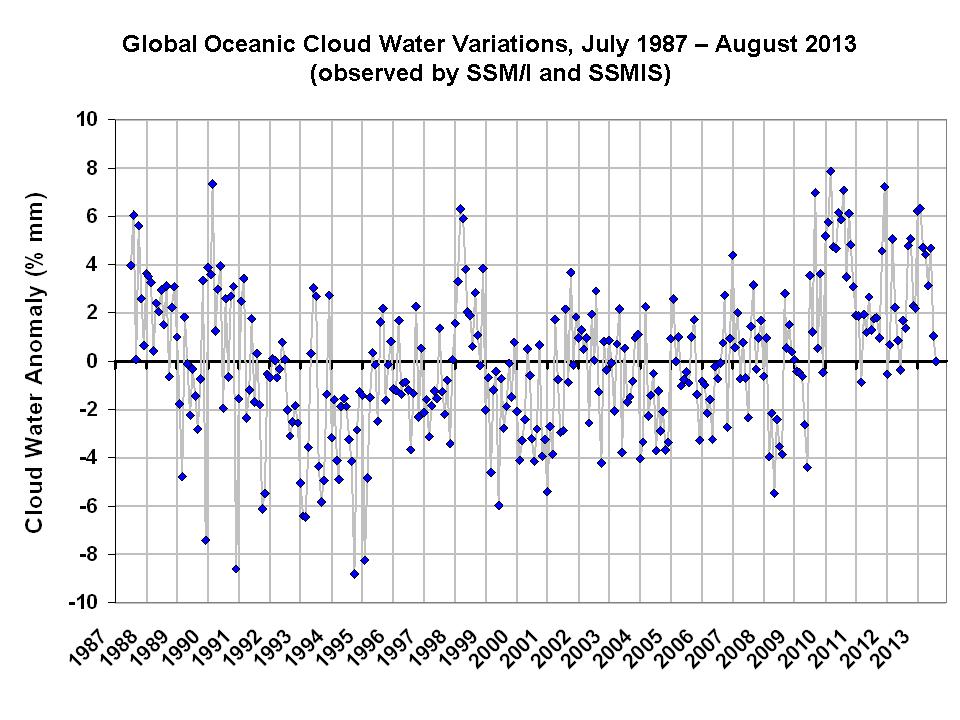
I’ve compared these cloud water variations to CERES radiative flux variations (both over the global ice-free oceans, between March 2000 and June 2010), and there is a pretty good relationship:
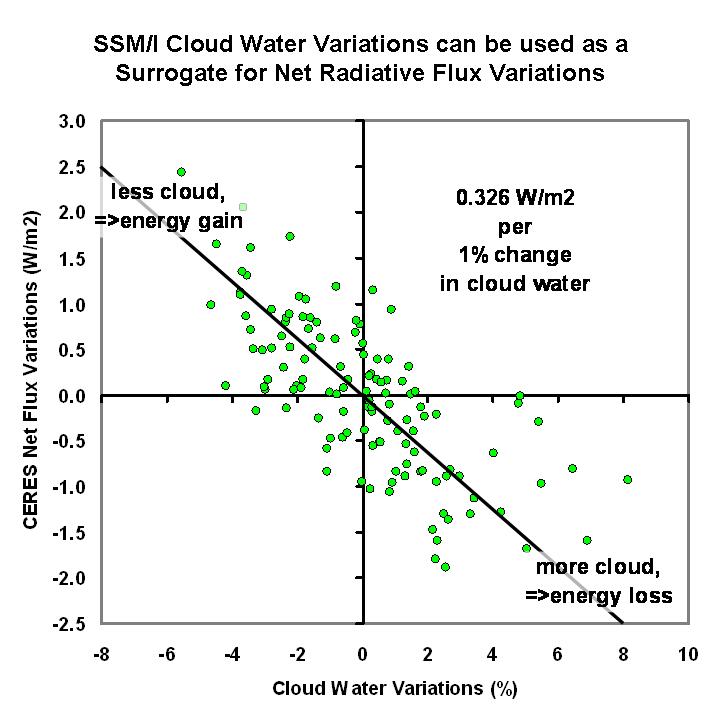
The correlation coefficient is 0.72, and the regression line shown is a 2-way fit.
If we take this regression relationship, and convert the SSM/I cloud water variations in the original plot to Net radiative flux variations, we get the following plot:
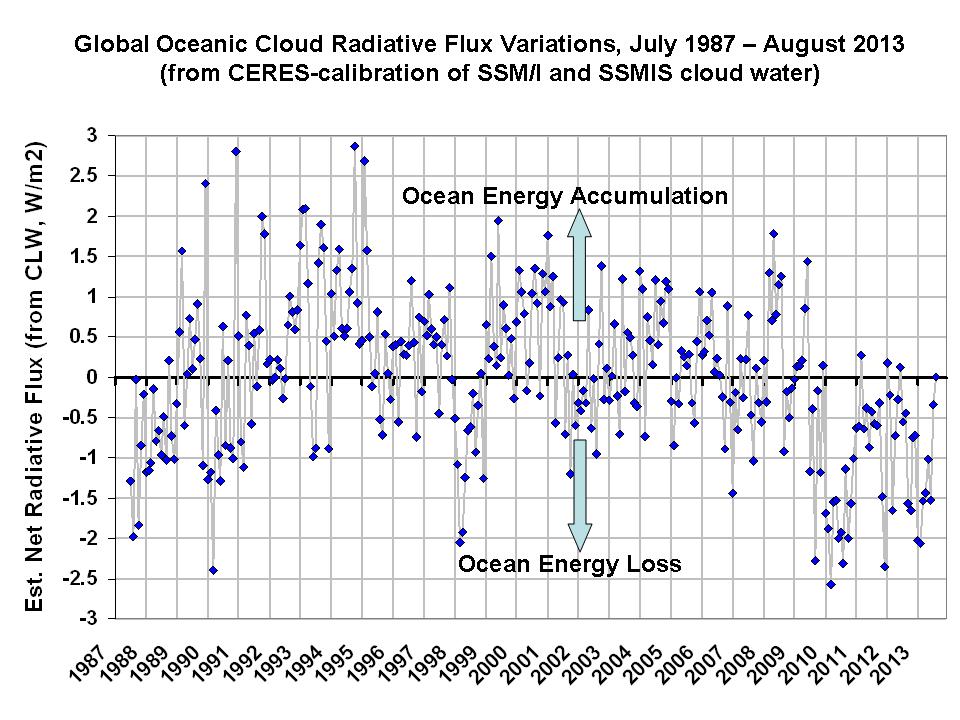
Now we can sum up these monthly average flux variations over time, and over the area of the global ice-free oceans (~341 million sq. km.), to get energy accumulation in 10**22 Joules, and compare it to one estimate of the increase in ocean heat content:
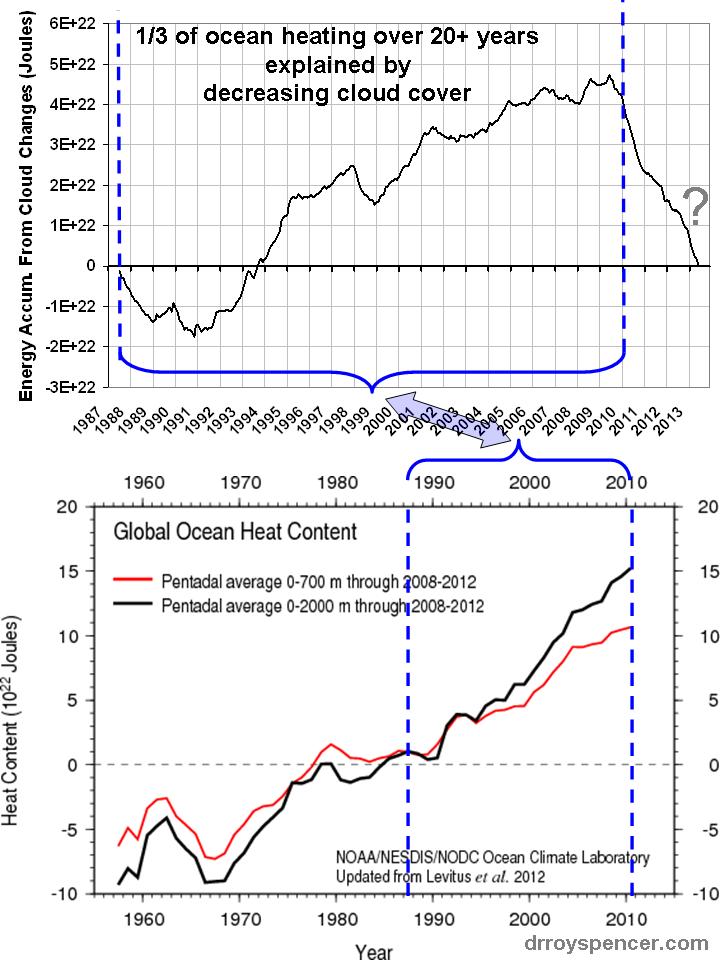
Taken at face value, this plot shows that about 1/3 of ocean heating over the 20-year period from 1990-2010 can be accounted for just based upon a change in oceanic cloud cover alone, probably a decrease in low clouds. (I say probably a decrease in low clouds because the SSM/I and SSMIS instruments only measure cloud water, not cloud ice which is transparent at the 19.35 and 37 GHz microwave frequencies. The CERES comparison I did vs. cloud water showed that most of the relationship was in the reflected shortwave [sunlight], not emitted longwave [infrared], which is consistent with a low-cloud effect rather than high-cloud.)
What Does All This Mean?
I think it is additional evidence that natural cloud variations cause multi-decadal time scale climate change.
But how do we know that this isn’t just positive cloud feedback on human-caused warming? Well, first of all there has been virtually no surface warming over this period of time, and cloud feedback is (by definition) in response to surface temperature.
Secondly, since about 2010 we see there has been an abrupt reversal in the trend of ocean energy accumulation…basically wiping out the energy accumulation caused by the previous 20 years of reduced cloudiness. Did positive cloud feedback suddenly change to negative cloud feedback? Seems hard to believe.
The more logical explanation is that there are natural cycles in cloud cover which cause multi-decadal periods of global warming or global cooling.
It will be interesting to see if the SSM/I-inferred changes in Net radiative flux after 2010 are supported with more recent CERES data (my CERES dataset only extends through June 2010). I doubt that it will be, at least to this large an extent, but who knows?
So what does this portend for the future? Well, there are (as always) different possibilities. The first that comes to mind is (again taken at face value), since the supposed warming effects of increasing CO2 are still twice the size of these cloud effects, if clouds are switching from augmenting anthropogenic warming to mitigating it, then what we might be seeing is a new period of reduced heating of the global oceans, as well as a continued plateau in global surface temperatures. The timing roughly coincides with the recent switch of the Pacific Decadal Oscillation (PDO) to its negative phase. This is just one possibility, and I’m sure readers here can suggest others.
Anyway, this is all very new, and seldom in my work has the final analysis ended up as clear cut as the initial analysis suggested. I don’t know when (or if) I’ll have time to do a careful evaluation of the results and submit them for publication. But I thought I would throw these results out there for discussion anyway.
Supplementary Evidence on Cloud Feedback
Since my discussion of clouds as ‘forcing’ versus ‘feedback’ is admittedly not very convincing, here is a lag regression plot of SSM/I cloud water versus HadSST3 sea surface temperatures during July 1987 thru August 2013. What it suggests, at least for year-to-year variability, is that a decrease in clouds tends to contribute to ocean warming, then clouds increase in response to that warming, leading to surface cooling:
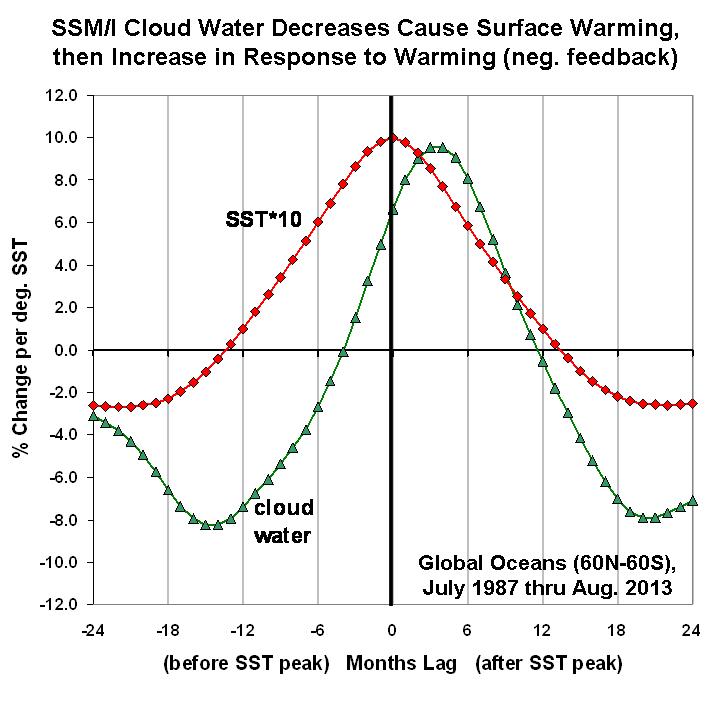

 Home/Blog
Home/Blog